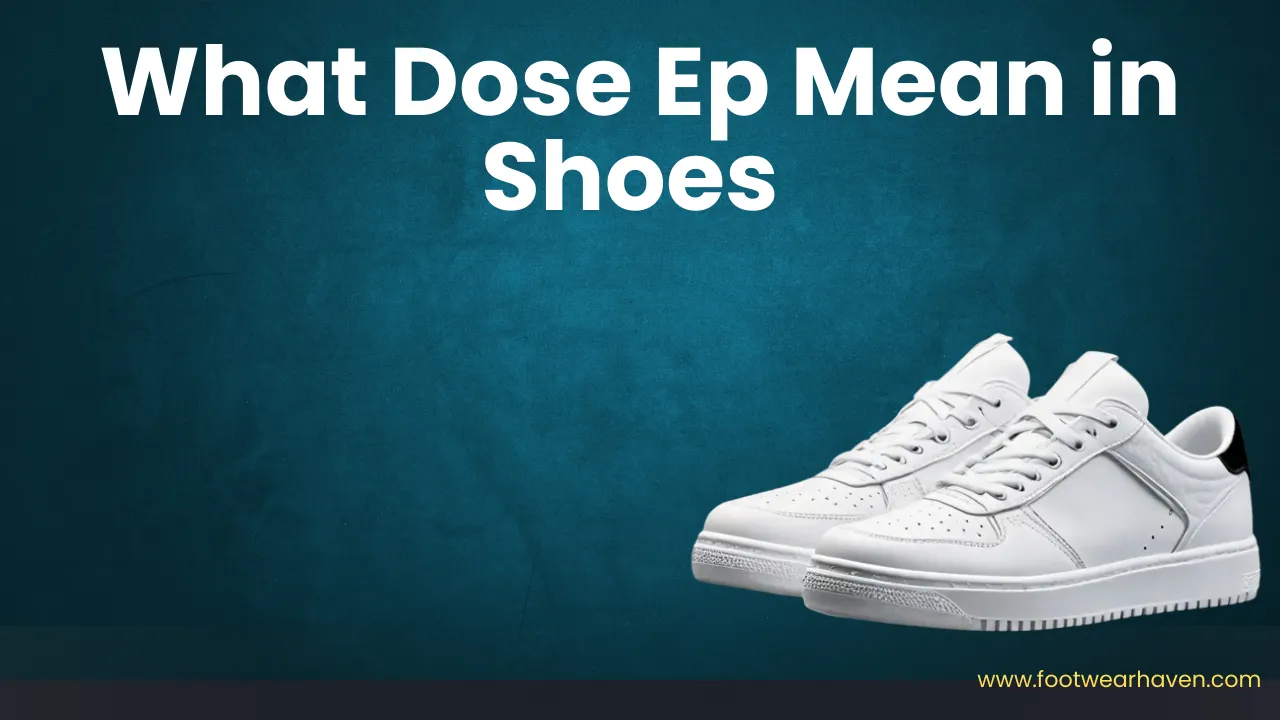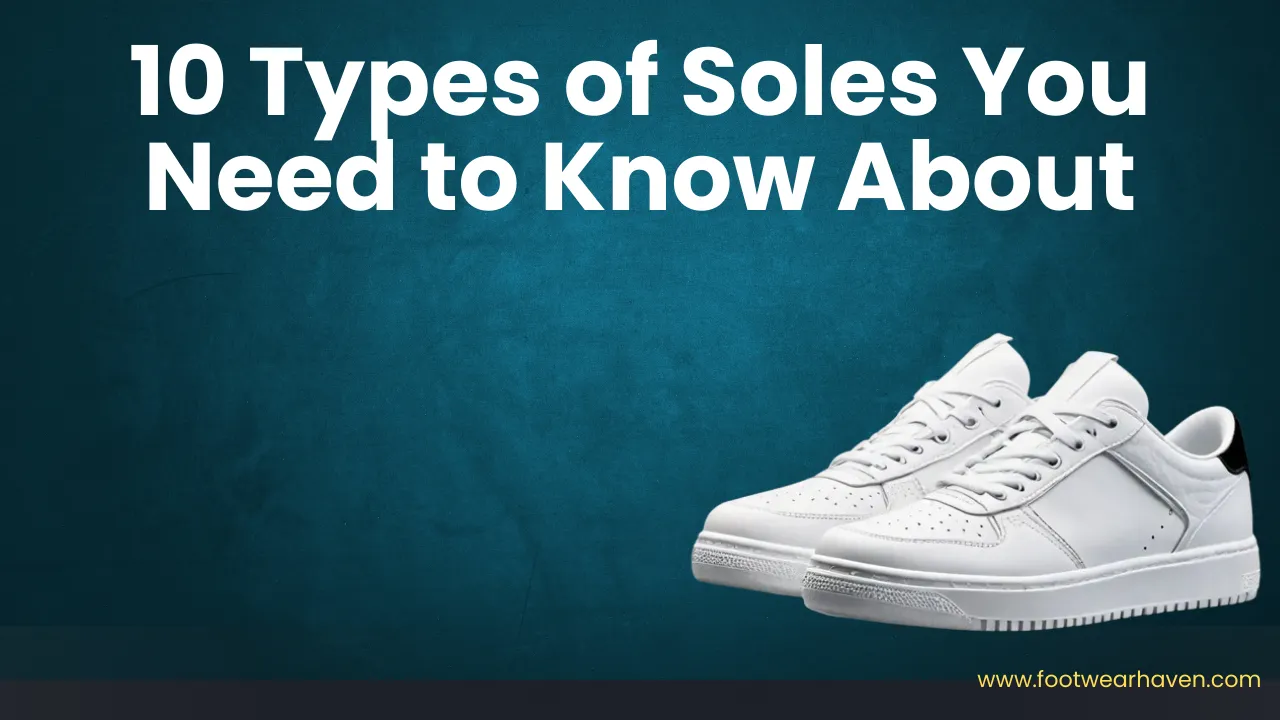If you’ve ever wondered what EP mean in shoes, it stands for Engineered Performance — a label that highlights footwear built with premium materials and advanced design for better comfort, traction, and durability. In simple terms, EP in shoes means the pair is optimised for athletic performance, offering superior cushioning and long-lasting support whether you’re running, training, or playing sports.
Table of Contents
ToggleDefining the Meaning of EP in Shoes
The term “EP” on some shoes might have left you curious. EP stands for Engineered Performance in the shoe industry. This label signifies that these shoes are constructed using advanced materials and modern technologies aimed at optimizing performance, especially for sports or high-intensity activities.
Benefits of EP in Shoes

1. Revolutionary Design
EP shoes go beyond regular footwear. They are expertly crafted to provide maximum comfort, support, and a sleek design. With an emphasis on functionality, EP shoes often feature ergonomic structures, superior support, and enhanced responsiveness to provide a top-notch experience.
2. Advanced Materials
EP footwear typically incorporates cutting-edge materials suited for various activities. These materials often include shock-absorbing soles, breathable fabrics, and cushioned midsoles, all designed to help you perform at your best during different activities.
3. Improved Performance
When wearing EP shoes, you’re equipped with footwear engineered to boost your performance. Whether you’re running, working out, or engaging in sports, EP shoes deliver superior support, flexibility, and cushioning, ensuring you stay comfortable and focused.
4. Longevity and Durability
EP shoes are designed to last, thanks to the durable materials and innovative construction techniques. Even with frequent wear, these shoes offer long-lasting performance, ensuring that they remain reliable over time.
Types of EP Components
- Breathable Uppers: Keep feet cool and comfortable during activity.
- Responsive Outsoles: Improve traction and grip on various surfaces.
- Advanced Midsoles: Provide cushioning and absorb impact for better comfort.
- Durable Rubber Outsoles: Made from solid or transparent rubber for superior support and wear resistance.
- End Price Strip: Extends from toe to heel to enhance durability and structure—an old shoemaking feature.
- Cushioning Technology: Modern tech (like Nike Shox) improves comfort and performance.
- Wider Fit Design: Offers more room for different foot shapes, ensuring comfort in high-impact movements.
Brands Using EP Technologies
1. Under Armour
Under Armour’s HOVR Havoc EP and Curry 7 EP are prime examples of EP shoes. Known for their sleek design, these models offer excellent support and traction, making them ideal for individuals seeking agility and speed.
2. Nike
Nike is one of the leading brands utilizing EP technology. In the early 2000s, they introduced EP rubber (ethylene propylene diene monomer) in their Shox series. This synthetic rubber is lightweight, durable, and resistant to abrasion, making it perfect for shoes’ soles and midsoles.
Over time, many other top brands have developed their own versions of EP technology, each focusing on improving specific aspects of performance like durability, grip, and cushioning.
3. Adidas
Adidas’s Dame 6 and Dame 4 EP are standout EP shoes, well-regarded for their sturdy construction and responsive cushioning.
4. Puma
Puma’s Clyde Hardwood EP sneakers offer an innovative design combined with top-tier performance. Their responsive cushioning and durable outsole provide excellent traction, ideal for sports activities.
How Do You Know If a Shoe Is EP?
Identifying EP shoes can be tricky since different brands use various terms to describe their unique models. However, there are some clues. Many brands prominently label their shoes as “EP” on the packaging or product descriptions, especially for performance-enhancing basketball shoes.
You can also look for distinguishing design features, such as thicker soles, enhanced heel and forefoot cushioning, and durable materials. While the term “EP” may not be universal, brands like Under Armour and Adidas have alternative names for their performance-enhancing technology, such as HOVR for Under Armour or Boost for Adidas.
How Do the EP Version of Shoes Affect the Price?
EP shoes generally come with a higher price tag than regular versions because of the premium materials and advanced technologies used. However, their durability and improved performance make the investment worthwhile in the long run.
FQAs (Frequently Asked Questions)
What is the difference between EP and regular shoes?
EP shoes use enhanced materials and construction for improved performance, while regular shoes focus more on style or casual wear.
Are EP shoes good for sports?
Yes, EP shoes are made for high-performance activities like running, training, and basketball, offering better grip and cushioning.
Why are EP shoes more expensive?
They cost more due to premium materials, advanced technology, and durable construction that ensure longer-lasting performance.
How can I tell if my shoes are EP?
Check the product label or description—EP shoes are often marked with “EP” and include thicker soles, durable outsoles, and advanced cushioning.
Final Words
EP technology brings a unique blend of lightweight durability to the shoe world. While slightly more expensive than other materials like leather, EP shoes offer an excellent balance of performance and value for athletes and active individuals. We hope this guide has clarified the significance of EP in footwear and provided you with the insights needed to choose the best EP shoes for your needs.




